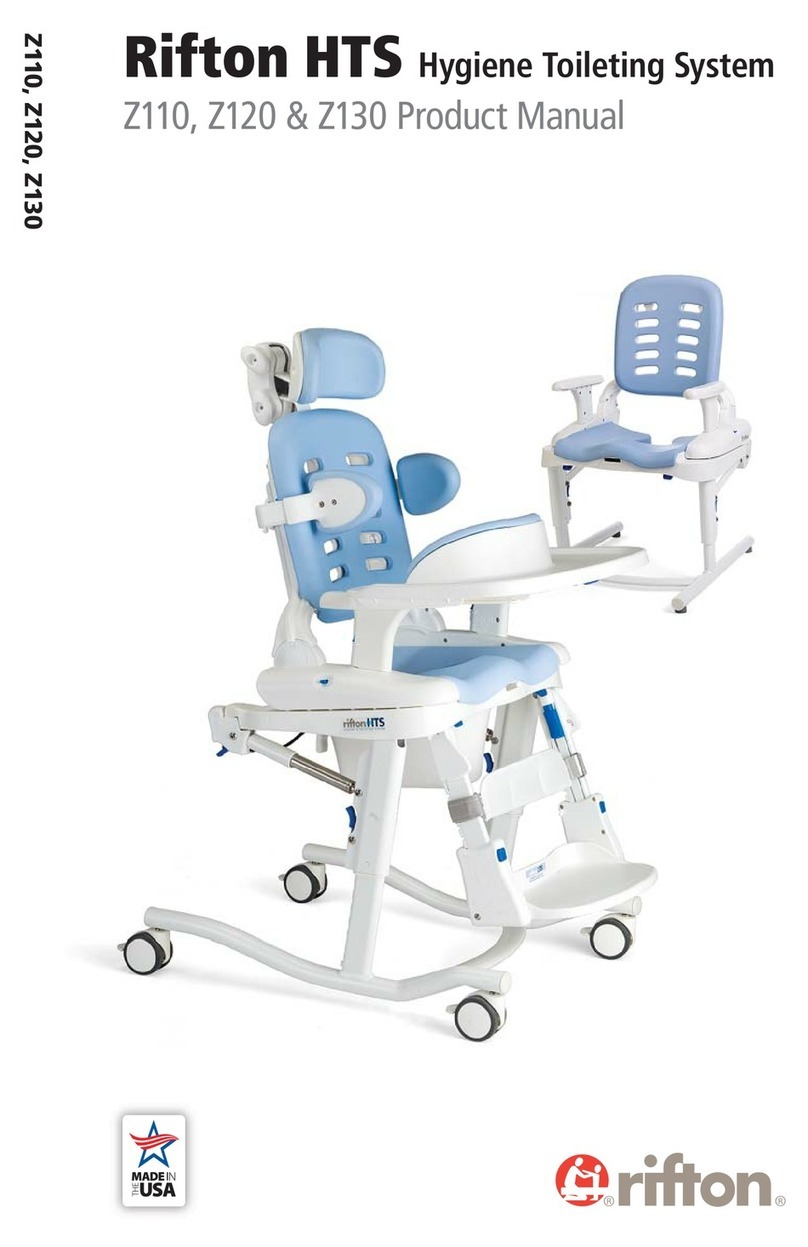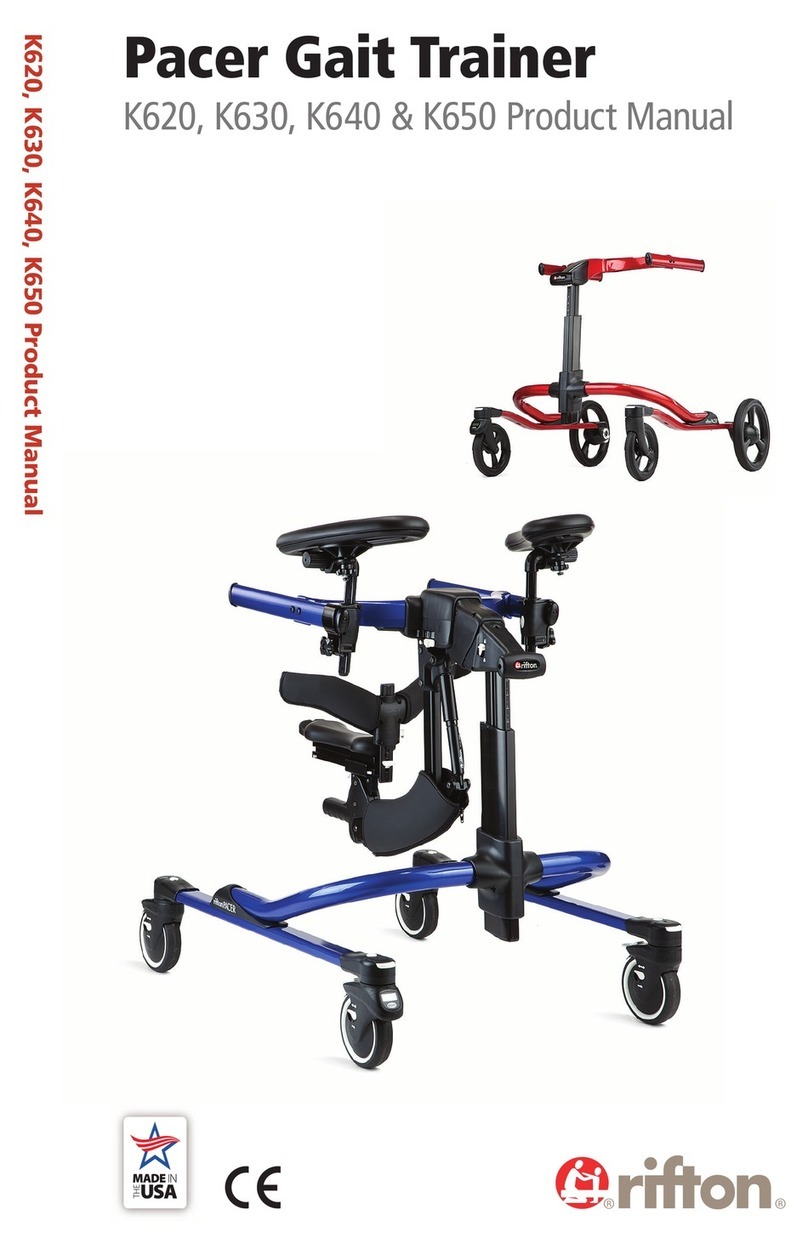5
User and item dimensions
User dimensions - inches (cm) Z110 small Z120 medium Z130 large
Height 30-46 (76-117) 42-56 (106-142) 50-74 (127-188)
Key user dimension: height
The user’s overall height is a general guide to help you select the appropriate size of HTS.
Choose the model that allows for growth.
Important: Make sure that seat width, depth and height are adequate for each individual user, and
that the user’s weight does not exceed the maximum weight recommended.
Item dimensions – inches (cm) Small Medium Large
Overall width 21¼ (54) 21¼ (54) 23½ (60)
Seat (front) to footboard height* 8-13 (20-33) 10-15 (25-38) 13-18 (33-46)
Seat (front) to floor; mobile tilt frame 15-21½ (38-55) 15-21½ (38-55) 17-22½ (43-57)
Seat (front) to floor; mobile non-tilt frame 15½-20 (39-51) 15½-20 (39-51) 18-22 (46-56)
Seat (front) to floor;
stationary non-tilt frame 12½-17 (32-43) 12½-17 (32-43) 15-19 (38-48)
Seat depth 8/9/10/11
(20/23/25/28)
11½/12½/13½/14½
(29/32/34/37)
14½/15½/16½/17½
(37/39/42/44)
Seat width 8/10/12 (20/25/30) 10/12/14 (25/30/36) 13/15/17 (33/38/43)
Armrest height 5¾ (14.5) 7 (18) 8¾ (22)
Backrest height above seat 16½ (42) 19½ (50) 24½ (62)
Backrest width 11½ (29) 13½ (34) 16 (41)
Tilt in space FORWARD 15° 15° 15°
Tilt in space BACK 15° 15° 15°
Backrest angle adjustment 6° fwd,
6° and18° back
6° fwd,
6° and18° back
6° fwd,
6° and18° back
Max. clear height under seat (tilt frame) 19 (48) 19 (48) 20 (51)
Max. clear height under seat
(stationary non-tilt frame) 15 (38) 15 (38) 16½ (42)
Max. clear height under seat
(mobile non-tilt frame) 18 (46) 18 (46) 19½ (50)
Portability base clearance
(fits over ADA compliant toilets) 18½ (47) 18½ (47) N/A
Max. working load - lbs (kg) 75 (34) 150 (68) **250 (113)
* When mobile base is in lowest positions and footboard is fully extended, it may prevent front casters from swiveling.
In this case, either change footboard angle or raise seat height to give casters room to swivel.
** The maximum working load for the large HTS footboard is 150 lbs (68 kg).





























